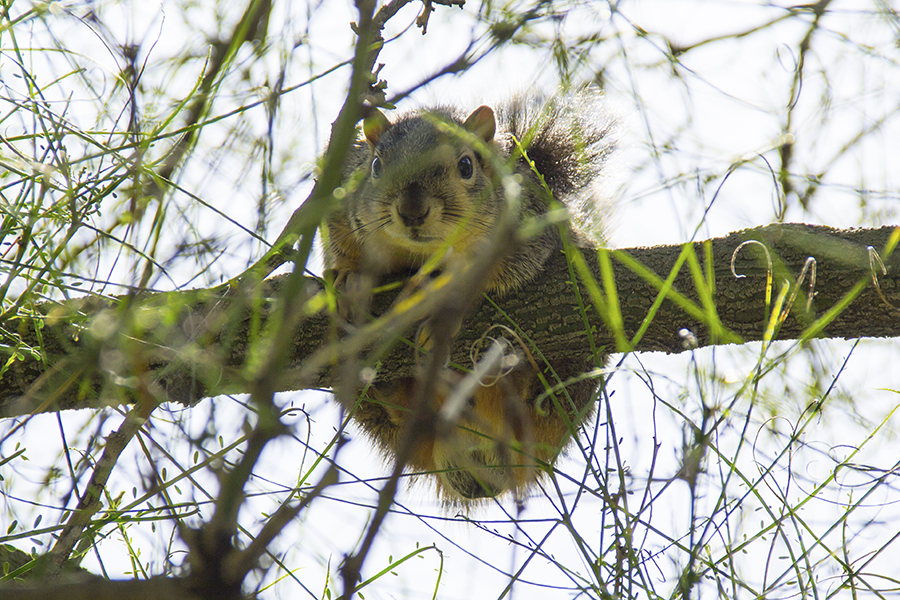
FAMILY
Sciuridae, with other small- to medium-sized rodents (including chipmunks, marmots, prairie dogs, and other tree and ground squirrels
NATIVE RANGE
Eastern U.S.
INTRODUCED RANGE
Western U.S. (Idaho, Wyoming, Montana, Oregon, California, Washington) and western Canada (Ontario, British Columbia)
Important Environmental Factors

Any level of paved or compacted ground >0%

Moderate to high variation in seasonal rainfall

High summer temperatures
Appearance
While the eastern fox squirrel thrives in Southern California’s cities, the native gray squirrel is much less likely to be found in urban areas. As its name suggests, the eastern fox squirrel has a fox-like coloring, with grizzled, buff to orange colored fur on its main body and reddish-brown underside [1]. Its ears are bright orange-brown. The western gray squirrel has silvery-gray fur with a white underside.
Habitat and Behavior
Eastern fox squirrel has steadily extended its range westward, and has also been introduced to western states such as California, Oregon, and Washington. The squirrels prefer woodlands, forest edges, or stands of large trees with an open understory, free of dense undergrowth. Large trees scattered in agricultural land are especially suitable, as the squirrels like to forage for crops like corn, soybeans, oats, wheat, and fruit [2]. Their other food sources, depending on the region, include insects, vegetation, bird eggs, and fungi. In California, they forage for walnuts, avocados, strawberries, and in the winter, eucalyptus seeds.
Impact in California
After being introduced to LA County over a century ago, eastern fox squirrel is now widespread throughout Southern California’s urban areas and can be spotted in parks, campuses, and neighborhoods [3, 4]. These invasive squirrels sometimes cause damage to property or agricultural crops and are considered pests. They are also believed to be displacing California’s native western gray squirrel (Sciurus griseus) by out-competing them for food and nesting sites.

Data source:
Species records provided by iNaturalist
References:
- Koprowski (1994) in Mammalian Species 480.
- Tesky (1993) in Fire Effects Information System, U.S. Department of Agriculture, Forest Service. [link]
- Muchlinski and Garcia (2017) in Bulletin, Southern California Academy of Sciences 116(3)
- Hoefler and Harris (2013), California Wildlife Habitat Relationships System, CDFW. [link]